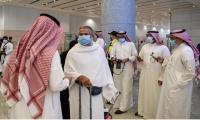LAHORE: Pakistan has ranked 147 out of 188 countries in the Human Development Index of 2016, which pushed its stumbling pursuit further away from achieving Sustainable Development Goals (SDGs 2016-2030) as it scored 55.6 under SDGs’ global index in the results released in July 2017.
“With worst figures in Human Development Index and most indicators lower than most countries in South Asia, Pakistan is ranked 122 on the SDG index of 157 nations compared to Bangladesh’s 120 and India’s 116 position,” revealed Mr Neil Buhne, United Nations Resident Coordinator/Humanitarian Coordinator, Islamabad, while giving his presentation as a keynote speaker at the inaugural ceremony of Punjab Human Development Forum 2018, where Chief Minister Shahbaz Sharif was the chief guest. This two-day PHDF 2018 has been organised by Planning and Development (P&D) Department, Punjab.
“Pakistan’s low human development indicators means too many peoples’ capabilities are not being realised with consequences on economic growth,” Neil Buhne quoted Mahbub-ul-Haq, former finance minister of Pakistan and Amartya Sen, Nobel Prize for Economics, as he unraveled even bleak picture, for other development statistics indicated why the country was unsuccessful in achieving the Millennium Development Goals (MDGs 2000-2015). Neil Buhne’s presentation revealed alarming indicators where Pakistan ranks low on the social development index of child and maternal health, which reflects the level of nutrition, education and access to health services in the country.
“Access to education remains low and completion rate for primary education is among the lowest in the world. One in 10 of the world’s primary age children who are not in school, live in Pakistan, which is second in the global ranking of out-of-school children.
“Pakistan ranks 143 out of 144 countries in the gender inequality index. These figures suggest there is still a long way to go to end gender disparity in education, as the male literacy percentage stood at 70% like in previous years.
“With a population of 9.8 million stunted children, Pakistan is ranked third in the world with the greatest number of children under five suffering from stunted growth.
“Placed 107 in a ranking of 118 developing countries, Pakistan performed worse than most of its South Asian neighbours in eliminating hunger.
“Compounding these development indicators and according to the Global Climate Risk Index, is the alarming fact that Pakistan already ranks among the top 10 countries in the world most affected by climate change continuously suffering from monsoon flooding, along with the recession of glacial and snow reserves, heat waves in urban centers and droughts,” revealed Neil Buhne’s eye-opening presentation.
He was of the view that human development approach was about improving the lives of the people and giving them the freedom of choice to live the lives they value. In the 1980s, increasing evidence showed that economic growth alone was not sufficient for sustained development. The policies of structural adjustment for growth too often did not have a human face, which was reflected in Pakistan, India and in many other countries where the quantity of growth did not translate into quality human development.
However, there are examples of Pakistanis realising their capabilities through innovative ways to educate, children’s health, nutrition put in place with safety nets and move towards ending poverty.
It is important to highlight the progress Pakistan has made over the past 25 years or so. Between 1990 and 2015, Pakistan’s HDI value increased from 0.404 to 0.550, an increase of 36.2 percent. Yet, it can be said that these ambitious programmes have not been translated into reality as Pakistan’s population growth has not slowed.
Neil Buhne added that the new agenda 2030 is committed to strengthening human capabilities, as well as voice, participation, gender equity, social justice and sustainability for all. It promises to “leave no one behind,” neither those in poverty nor those facing discrimination, neither in present nor in future generations.
“Access to Information and Communications Technology (ICT), part of Goal 9, will significantly affect the choices and opportunities available to people everywhere. Inexpensive and reliable access to the Internet may enable other capabilities in the areas of education, work and political participation, among others, when well-managed. But there are stark differences across the globe. While 79% of people in Europe use the Internet, only 25% of those in sub-Saharan Africa and only 6% of the population in least developed countries are Internet users. In Pakistan, it provides opportunities to some but needs to provide opportunities to more people for human development,” concluded Mr Neil Buhne.
Justice Tariq Mehmood Jahangiri took up Sher Afzal bail plea for hearing
CCP’s announcement made, stating that applicants are required to pay money upfront in order to enroll
According to details, the police took a van filled with female students of medical college to a police station on...
In this image, the logo of the Nowshera Press Club can be seen. — Facebook/Nowshera Press Club/FileNOWSHERA: The...
Senator Sherry Rehman said the PPP had previously extended an offer to the PTI to form a government, but the PTI is...
A division bench comprising Justice Shakeel Ahmad and Justice Dr Khurshid Iqbal heard the petition filed by the KP...







